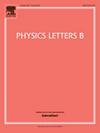Exploring f(Q) gravity through model-independent reconstruction with genetic algorithms
IF 4.3
2区 物理与天体物理
Q1 ASTRONOMY & ASTROPHYSICS
引用次数: 0
Abstract
In this paper, we use a machine learning technique, specifically genetic algorithms, to reconstruct the functional form of gravity in a model-independent manner. To achieve this, we use Hubble measurements derived from cosmic chronometers and radial baryon acoustic oscillations, including the latest Dark Energy Spectroscopic Instrument (DESI) BAO data. For the cosmic chronometers, we estimate the covariance matrix for 31 data points, considering both statistical and systematic errors. To the best of our knowledge, this is the first time that this estimation has been carried out, providing a robust and reliable foundation for reconstructing the functional form of gravity. We reconstruct the Hubble parameter without assuming any specific dark energy model or a flat Universe, which allows us to derive gravity without prior assumptions. In this reconstruction, we use the current value of derived from genetic algorithms. The reconstructed function aligns well with the ΛCDM model, suggesting only minor deviations at high redshift values that remain within the 1σ confidence region. Our approach is fully model-independent and does not rely on any a priori assumptions about the cosmological model, providing a powerful tool to describe the accelerated expansion of the Universe.
求助全文
约1分钟内获得全文
求助全文
来源期刊

Physics Letters B
物理-物理:综合
CiteScore
9.10
自引率
6.80%
发文量
647
审稿时长
3 months
期刊介绍:
Physics Letters B ensures the rapid publication of important new results in particle physics, nuclear physics and cosmology. Specialized editors are responsible for contributions in experimental nuclear physics, theoretical nuclear physics, experimental high-energy physics, theoretical high-energy physics, and astrophysics.
 求助内容:
求助内容: 应助结果提醒方式:
应助结果提醒方式:


